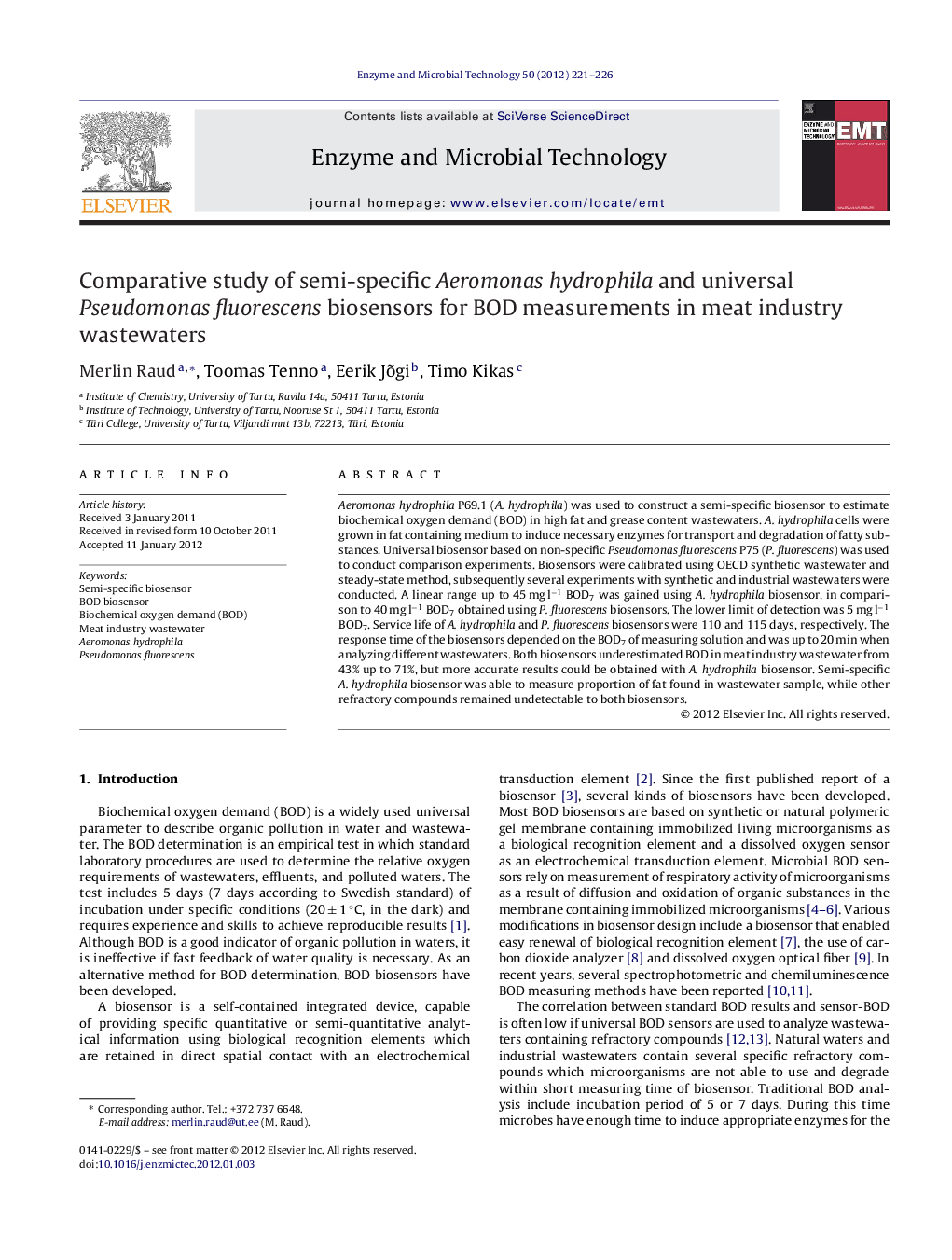| Article ID | Journal | Published Year | Pages | File Type |
|---|---|---|---|---|
| 17260 | Enzyme and Microbial Technology | 2012 | 6 Pages |
Aeromonas hydrophila P69.1 (A. hydrophila) was used to construct a semi-specific biosensor to estimate biochemical oxygen demand (BOD) in high fat and grease content wastewaters. A. hydrophila cells were grown in fat containing medium to induce necessary enzymes for transport and degradation of fatty substances. Universal biosensor based on non-specific Pseudomonas fluorescens P75 (P. fluorescens) was used to conduct comparison experiments. Biosensors were calibrated using OECD synthetic wastewater and steady-state method, subsequently several experiments with synthetic and industrial wastewaters were conducted. A linear range up to 45 mg l−1 BOD7 was gained using A. hydrophila biosensor, in comparison to 40 mg l−1 BOD7 obtained using P. fluorescens biosensors. The lower limit of detection was 5 mg l−1 BOD7. Service life of A. hydrophila and P. fluorescens biosensors were 110 and 115 days, respectively. The response time of the biosensors depended on the BOD7 of measuring solution and was up to 20 min when analyzing different wastewaters. Both biosensors underestimated BOD in meat industry wastewater from 43% up to 71%, but more accurate results could be obtained with A. hydrophila biosensor. Semi-specific A. hydrophila biosensor was able to measure proportion of fat found in wastewater sample, while other refractory compounds remained undetectable to both biosensors.
► Adaptation of membranes in fat solution improved sensitivity of A. hydrophila. ► A semi-specific biosensor measures specific BOD more accurately than universal one. ► A. hydrophila and P. fluorescens sensor signals differ due to wastewater fat content.
